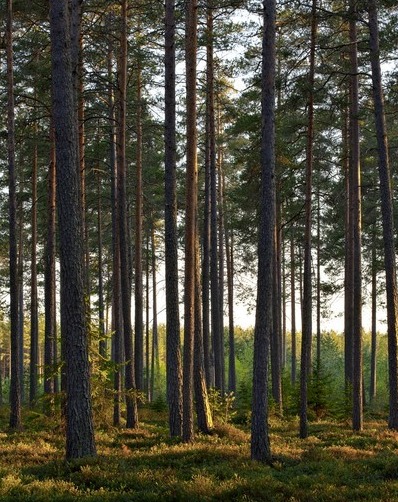6.3 Forest biomes
 Most Finnish forests belong to the Northern coniferous forest biome, also known as taiga.
Most Finnish forests belong to the Northern coniferous forest biome, also known as taiga. This biome stretches across the northern parts of the Northern Hemisphere, all the way from North America to Northern Europe and Siberia.
Finland is among the few nations that exists almost completely inside the Northern coniferous forest vegetation zone. The Finnish taiga can be divided into spruce-dominated wet taiga forests and pine-dominated dry taiga forests.
The southwestern and southernmost parts of Finland are located on the border of the Northern coniferous forest and temperate broadleaf forest biomes. This border zone is displays a mixture of characteristics from both Northern coniferous forests and the broadleaf forests of Central Europe. This mixed biome is sometimes called the oak forest zone. Groves are an example of Finnish broadleaf forests.
The northernmost parts of Lapland consist of barren fells. It is a mixture of coniferous forest and tundra vegetation.
In the fells, lower regions are dominated by coniferous forest, which is replaced by forests of small, twisted mountain birch in higher elevations. The tops of fells are free of most vegetation, as they are located above the tree line.
| Feature | Pine forest | Spruce forest | Grove (Broadleaf forest) |
|---|---|---|---|
| Ecosystem | dry taiga | wet taiga | grove |
| Soil type | sand, gravel | till | nutrient-rich soil |
| Availability of water | bad | good | good |
| Amount of light on the forest floor | high | low | high during the spring, low during the summer |
| Primary tree species | pine | spruce | broadleaf trees |
| Undergrowth | lichens, mosses, lingonberry | sprigs, e.g. blueberry | shrubs, grasses, flowers, etc. |
| Animals | only a few animals | some animals | many animals |
| Distribution | all of Finland, especially eskers and rocky areas | all of Finland | Southern Finland |